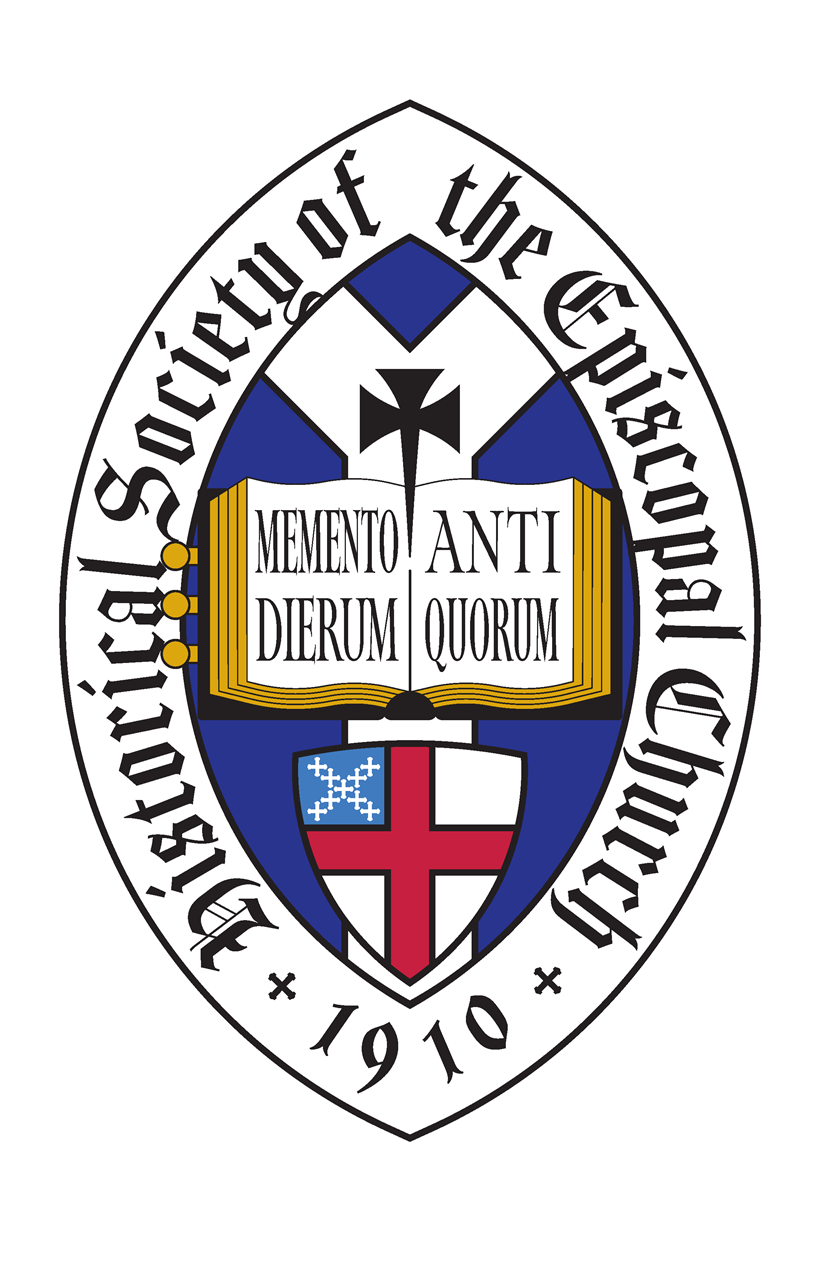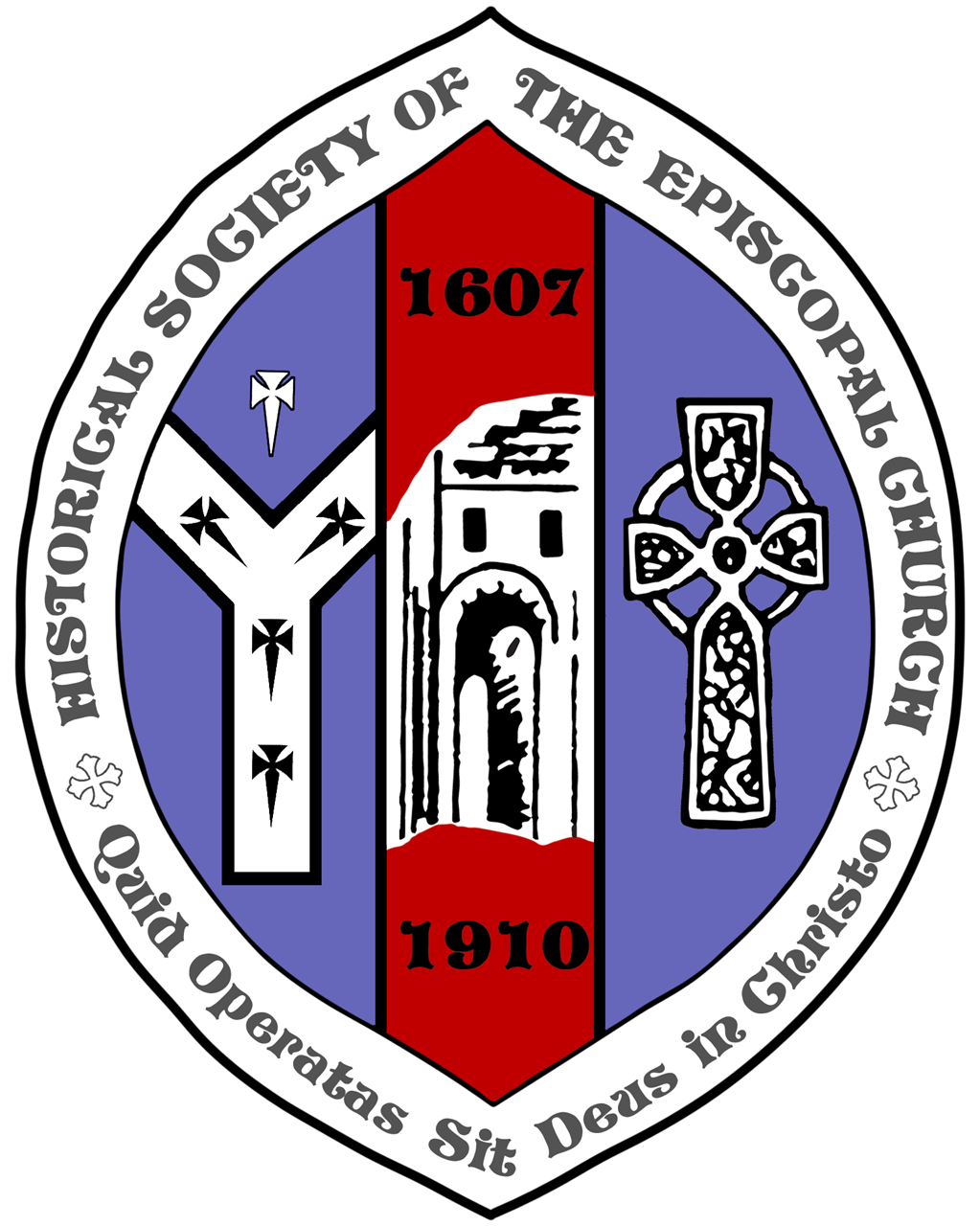|
The Seal of the Historical Society of the Episcopal Church was adopted by the Board of Directors on June 17, 2023. A Task Force facilitated an in-depth process of heraldry, symbolism, language, design, public relations, and color to propose a new design, replacing the original seal adopted in 1939. Description: The Seal of the Historical Society of the Episcopal Church is in the form of an almond-shaped vesica piscis, a geometric shape used widely in medieval ecclesiastical design. The outer band of the Seal is inscribed with the name of the Society and the year of its foundation. The inner space features an armorial design, comprised of a blue field charged with a white pall. On top of this background are placed an open book with three seals attached to the left side of its binding, the pages inscribed with the words of the Society’s motto, and transfixed partially through its gutter by a distinctive cruciform device blazoned in the language of heraldry as a cross paty fitchy. Below the book is placed a shield bearing the Arms of the Episcopal Church. Symbolism: The blue field, white pall, and black cross paty fitchy, all evoke the official Arms of the Archbishop of Canterbury, historically, the spiritual primus inter pares of the bishops of the Anglican Communion, that featured prominently in the design for the former Seal of the Society, symbolizing an emphasis on Anglican and Episcopal history, the title of the Society’s scholarly journal. The open book, representing a volume of Holy Scripture, bears on its pages the words of the Society’s motto, ‘Remember the days of old,’ taken from Deuteronomy 32:7 in the text of the Latin Vulgate. The three clasping seals attached to the book symbolize both the Tri-History Conference, a cooperative project between the three historical organizations of the Episcopal Church, including HSEC, as well as the Archives of the Episcopal Church, the Episcopal Women’s History Project (EWHP), and the National Episcopal Historians and Archivists (NEHA), all three of which have been in cooperation with the Society since their inception. The shield bearing the Arms of the Episcopal Church honors the vital connection between HSEC and the General Convention, and is borne by permission. Blazon: A vesica piscis Azure charged with a pall enhanced Argent surmounted in fess by an open book also Argent edged, clasped, and having on the dexter side three seals Or, bound and inscribed MEMENTO DIERUM ANTIQUORUM in letters Sable, and in base the Arms of the Episcopal Church (Argent a cross Gules, the dexter canton Azure charged with nine cross crosslets in saltire Argent), overall in chief a cross paty fitchy Sable, all within a bordure Argent inscribed HISTORICAL SOCIETY OF THE EPISCOPAL CHURCH and in base 1910 separated by two cross crosslets all Sable. (Blazon provided by Mr. Bruce K. Patterson, Deputy Chief Herald of Canada.) |
Seal 1939-2023
The Seal of the Historical Society of the Episcopal Church (1939-2023) was designed by the Rev. Arnold Harris Hord, a charter member of the Historical Society. It was adopted at the Annual Meeting of April 20, 1939. In the language of heraldry, these arms are described as Purpure, a pale gules with the Tower of the Church at Jamestown argent, date 1607 above and 1910 below, between the Arms of the See of Canterbury and an Iona Cross of the last, a bordure or, with the inscription sable.
Seal 1939-2023
| THE TOWER OF THE CHURCH AT JAMESTOWN, VIRGINIA THE ARMS OF THE SEE OF CANTERBURY THE IONA CROSS MOTTO — Quid operatus sit Deus in Christo |
Historical Society of the Episcopal Church
Promoting preservation of the history of the Episcopal Church |

